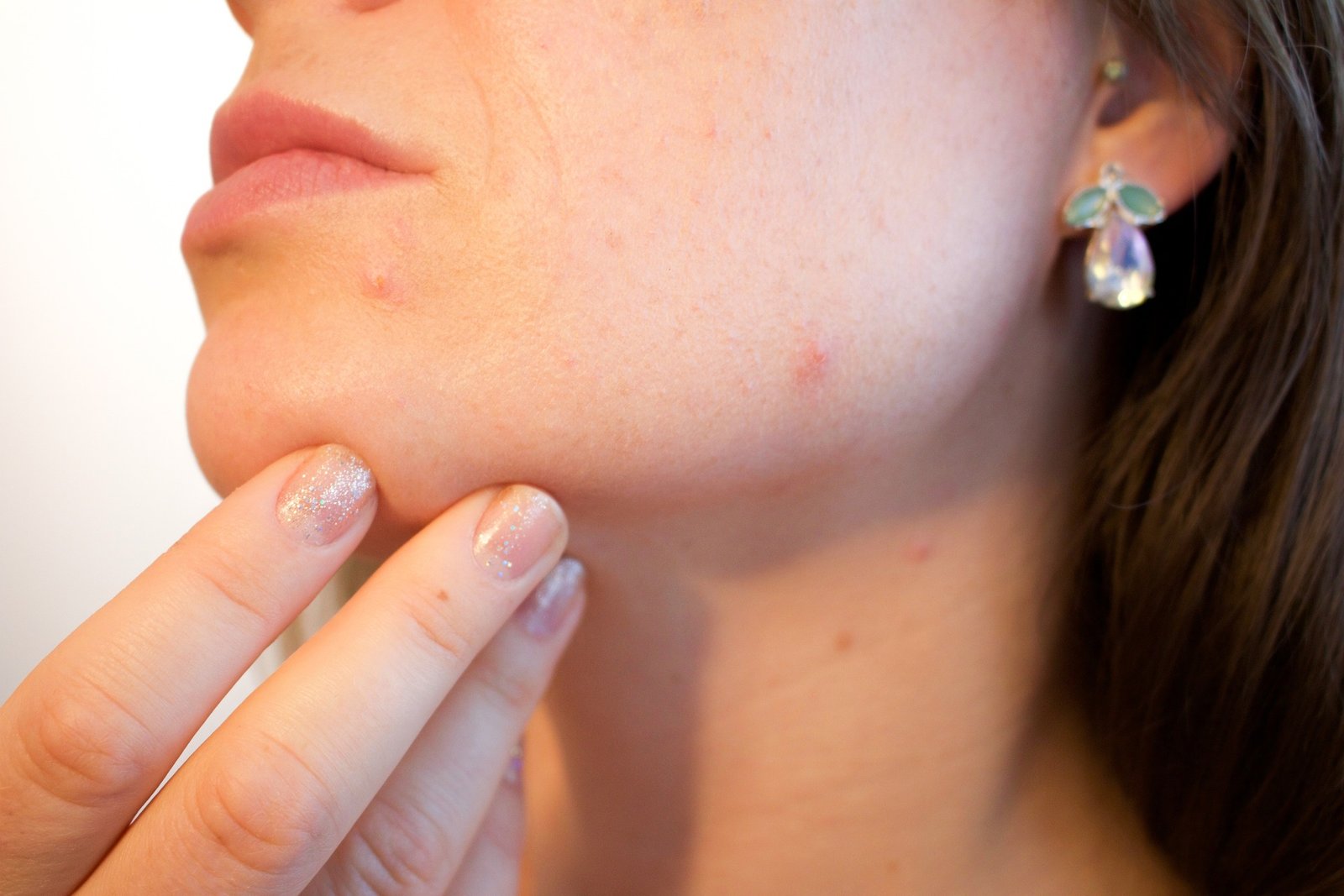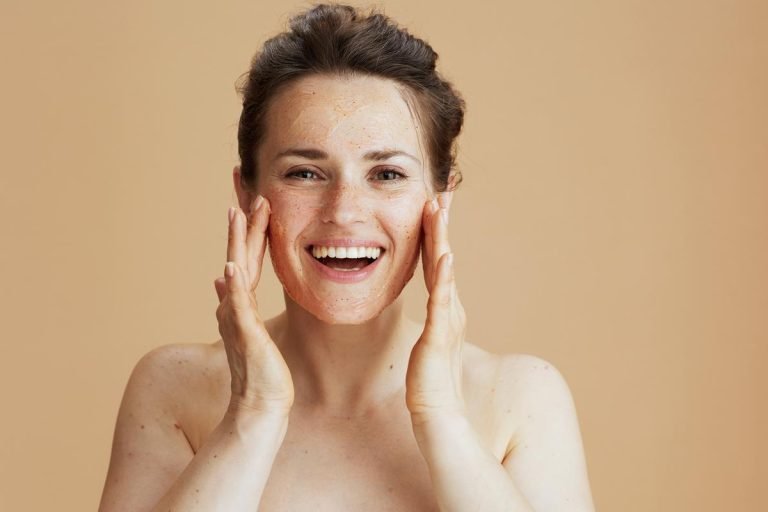Acne Marks Vs Acne Scars: How To Difference And Deal With It
Acne marks vs acne scars, why do they form and how can you improve their appearance?
Acne marks vs acne scars: the differences
The terms “acne marks vs acne scars” are often used to describe the same thing, but are distinct from each other, and each has its implications. Although these two types of after-effects are perfectly natural and generally nothing to worry about, anyone looking to fade their appearance needs to recognize the differences to find the most effective advice.
So, what are the main differences between acne marks vs acne scars?
Acne marks and acne scars on different skin
While acne marks and acne scars have similarities in appearance, they are very different from each other.
Acne marks or post-acne spots are the result of post-inflammatory hyperpigmentation (PIH) and appear as dark-colored spots that remain after the acne lesions have healed. They are flat, often brown or reddish, and result from an increase in melanin production in the skin. They form as part of the body’s natural response to inflammation and generally fade over time as the skin renews itself. However, they can sometimes persist for years and some people may find them very bothersome.
Post-inflammatory erythema is another type of mark caused by inflammation, which appears as red spots, linked to dilation of blood vessels.
Conversely, acne scars, sometimes called pimple scars, result from permanent changes in the texture and appearance of the skin. There are many different variations, usually appearing during the healing process of a severe acne lesion. Unlike acne marks, which are flat and dark in color, acne scars have a rough texture and most often form visible pits or holes on the surface of the skin, although they can also be raised.
Because they result from changes in the skin’s collagen structure, it can be more difficult to reduce their appearance. This difficulty is also determined by the type of acne scar.
Types of acne scars
There are different variations of acne scars. So, the first step in your acne skin care journey should be to correctly identify the type of scar you have, but what exactly are they?
There are two main types of scars: recessed scars and raised scars.
Hollow or atrophic scars are generally the result of tissue and collagen breakdown, forming a depression in the skin of varying size and depth. They can be classified into 3 main subtypes according to their shape:
- V-shaped or ice-pick scars:
These are the finest. they can extend into the dermis, creating a deeper, V-shaped hollow in the skin. They can be thought of as looking like puncture marks in the skin. - U-shaped scars or craters (or “Boxcar” in English):
A little wider and rounded in shape, they form a depression that resembles a flat-bottomed crater with well-defined edges. - M-shaped or “rolling” scars:
They are the result of fibrous bands present under the surface of the skin, which exert tension on the epidermis. Their border is less well-defined, giving the skin a wavy texture.
Raised scars are generally due to the overproduction of collagen and are seen more rarely in cases of acne. They include the following subtypes:
- Hypertrophic scars:
These are areas of thicker skin that develop over an injury or inflammation. They form a blister which may disappear over time. - Keloid scars:
Also raised, these scars extend to surrounding tissues, beyond the original wound. It is very difficult to make them disappear because they can recur. However, they are less common than the other types of acne scars on this list and are more likely to appear in people with a genetic predisposition.
Hyperpigmentation and other post-acne marks
Hyperpigmentation, a sequela of acne breakouts, can play an important role in the formation of dark, brown, or black spots on our skin. It is important to differentiate this phenomenon from the appearance of red spots linked to post-inflammatory erythema because their treatment will be different. By understanding these processes, we can understand why they appear and learn more about how to help remove dark marks left by pimples.
Hyperpigmentation post-inflammatory (HPI):
Brown and black spots:
After an acne lesion heals, it often leaves darker, brown, or black patches of skin. This phenomenon is particularly common among people with darker skin tones.
Post-inflammatory hyperpigmentation is due to an overproduction of melanin, the pigment responsible for the color of the skin, hair, and eyes. When acne causes inflammation, the body responds by increasing melanin production. Which can lead to a change in color and the appearance of those unwanted spots.
Understanding how hyperpigmentation contributes to the formation of these spots allows you to take a more effective approach, know what to do following the appearance of a brown spot after a pimple, and work towards obtaining a radiant and unified complexion. By using effective skin care products, targeted treatments, and diligent sun protection, we can help minimize the appearance of these acne spots/marks.
Red spots (post-inflammatory erythema)
Caused by dilation of blood vessels near the surface of the skin, these pink or red spots appear shortly after a pimple heals. Although they are not true scars, they contribute to the change in color of the complexion after acne. These spots usually fade on their own after 3 to 6 weeks.
Factors influencing the healing and fading of acne scars
The process of healing and fading acne scars is complex and influenced by many factors. From skin type to scar type, to individual healing processes, each element plays a role in how long and effectively scar reduction lasts.
Skin type and type of scar or mark:
Fair skin, for example, tends to have less visible hyperpigmentation, while darker skin may have persistent dark spots. The type of after-effects also comes into play. Colored marks, like post-inflammatory hyperpigmentation, can sometimes fade naturally over time, while deeper scars, like ice pick or crater scars, are much harder to remove.
The healing process can also be affected by the location of the scar on your body. It’s all about blood circulation and skin cell regeneration: real natural special effects.
Individual healing processes:
Each organism reacts differently to healing and scar reduction. It is a unique development written in our genes, linked to our general health and the functioning of our immune system. For some, healing is faster (halo laser), while for others it takes a little more time and effort. It’s important to remember that everyone’s experience is as unique as their fingerprints.
Time taken for scars to fade:
Do acne scars go away on their own? Some light marks and superficial scars may fade naturally over time, while larger scars may require a greater level of intervention.
The time it takes for scars to fade depends on several factors, such as the type of scar, its depth, and the treatment approach. Some scars may improve in just a few weeks, while others take months or even years to fade. The main thing is to carefully follow your skincare regime and apply the recommended treatments to speed up the fading process.
Understanding these factors allows you to have realistic expectations about the healing process and scar reduction. Remember that it is not always possible to eliminate scars, but it is possible to significantly improve the appearance of acne scars by adopting the right strategies and following a skincare routine with diligent skin. If after 12 months you see only minimal improvement, consult your dermatologist for further advice.







